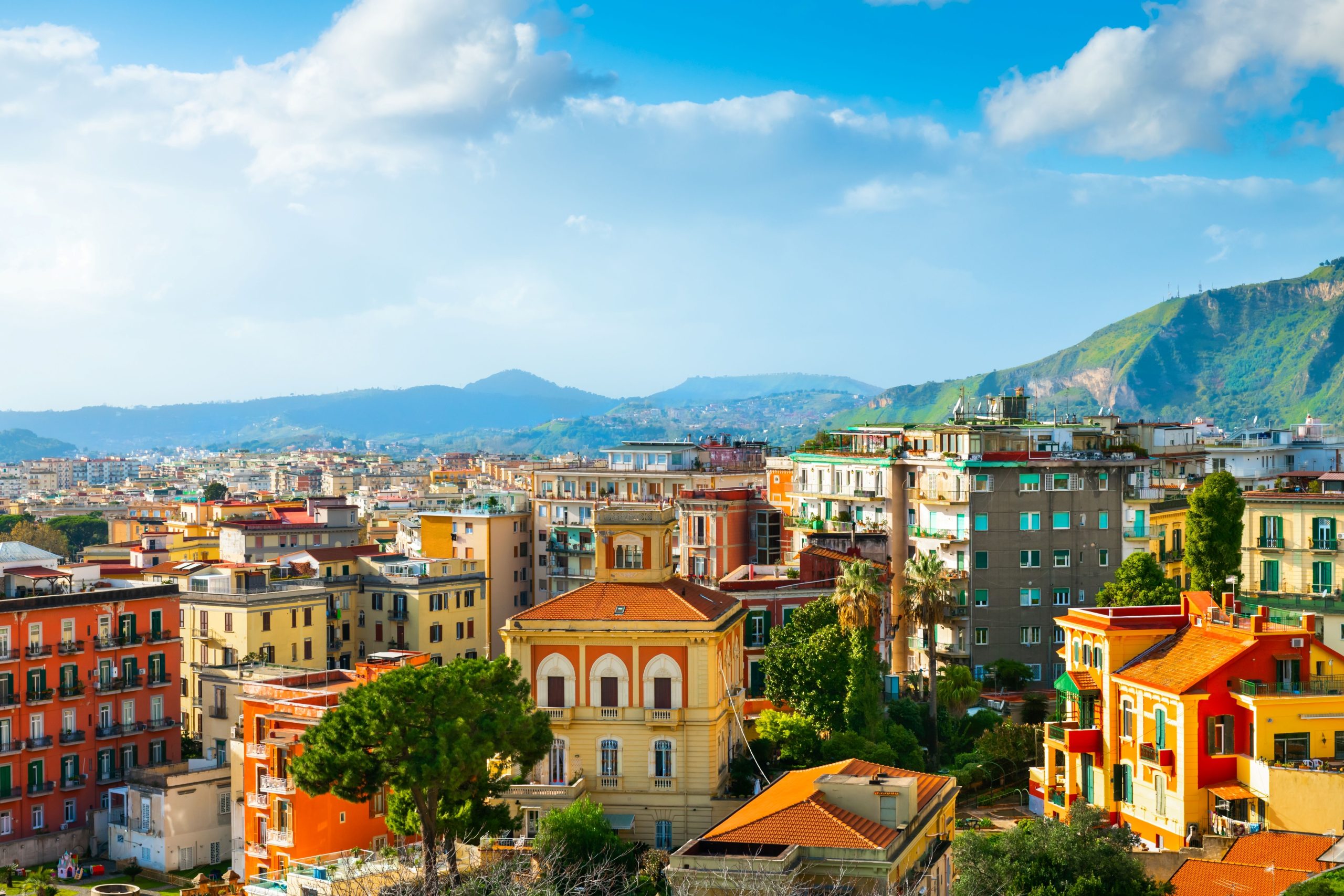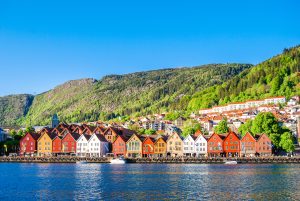Naples, Italy’s third-largest city, is a place where history, culture, and passion merge into a fascinating blend. Between its gritty street charm, ancient ruins, and breathtaking coastal scenery unfolds a way of life that’s hard to put into words — yet instantly felt. Whether you’re sipping an espresso at the bar, gazing at Mount Vesuvius, or taking your first bite of an authentic Neapolitan pizza, this city strikes straight at the heart.
Top Attractions in Naples
Mount Vesuvius and Pompeii
Vesuvius rises impressively over the Bay of Naples and is one of Italy’s most famous landmarks. Its last major eruption in 1944 is a reminder that nature is ever-present here. Those who climb to the crater are rewarded with a spectacular view of the sea and the city. Inseparably linked to the volcano is Pompeii — the ancient city buried under ash in 79 AD. Walking through the ruins, you can vividly imagine the daily life of the Romans. Frescoes, villas, and mosaics bear witness to a glorious yet tragic past.
Fun Fact: Vesuvius is the only active volcano on the European mainland and is regularly monitored by volcanologists.
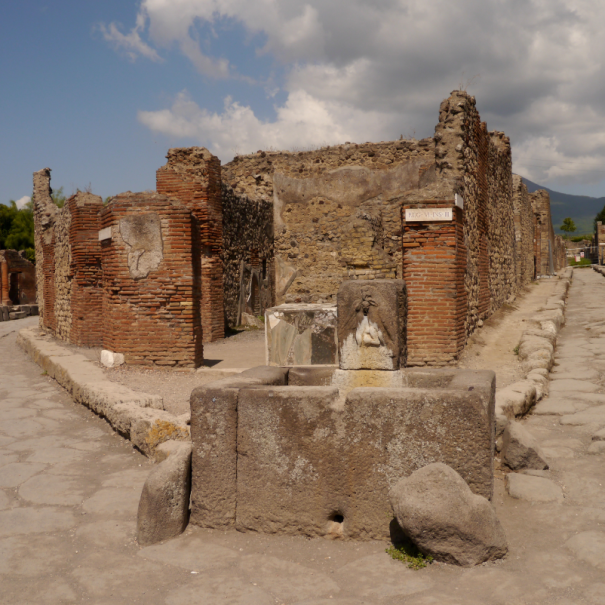
Castel dell’Ovo
The Castel dell’Ovo, or “Egg Castle,” is the oldest surviving building in Naples and sits on a small island just off the coast. Its name comes from a legend claiming that the poet Virgil placed a magical egg in its foundation, said to safeguard the city’s fate. From the fortress walls, visitors enjoy a breathtaking view over the Gulf of Naples, the old town, and Mount Vesuvius. Today, the fortress serves as an exhibition space for art and history and is a popular spot for leisurely walks.
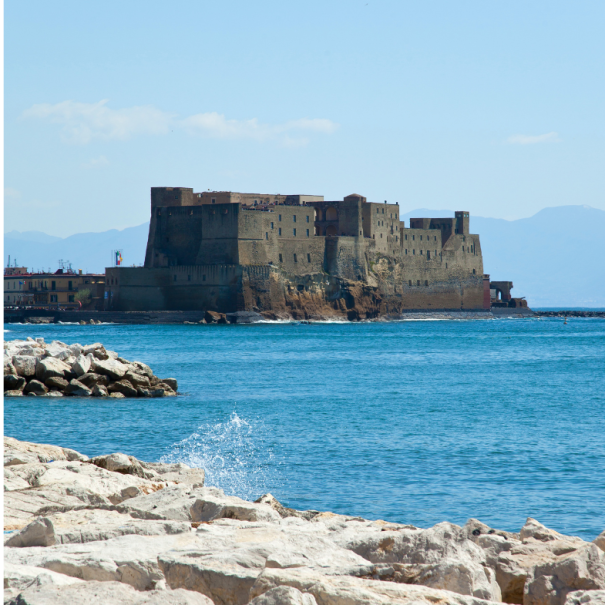
Piazza del Plebiscito & Palazzo Reale
The majestic Piazza del Plebiscito is the heart of the city. Here, the splendid Royal Palace meets the imposing Church of San Francesco di Paola — a setting that would have impressed even Roman emperors. Especially in the evening, when the facades are illuminated, a nearly magical atmosphere fills the square.
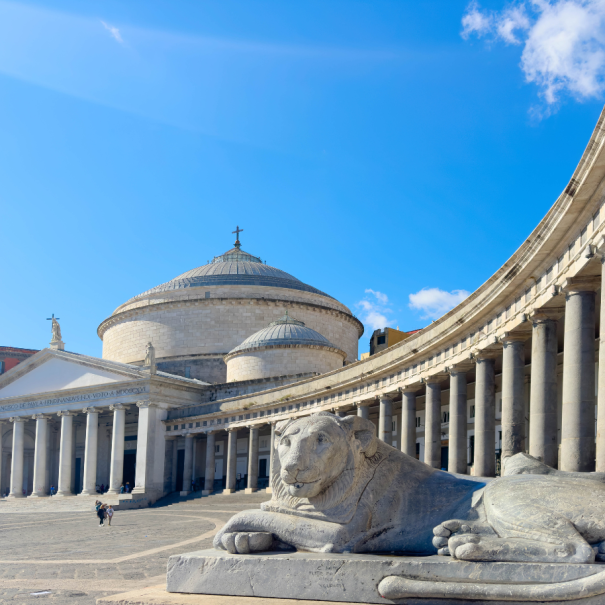
Spaccanapoli
The narrow street that cuts Naples’ old town in two is more than just a thoroughfare — it’s an experience. Among old palaces, churches, and small workshops, you’ll witness the city’s unfiltered daily life. The air is filled with the scent of pizza, espresso, and fresh pastries, while scooters and street vendors dominate the scene. What’s most impressive is the coexistence of past and present: baroque churches stand side by side with modern street art. Along Spaccanapoli, you’ll find landmarks such as the Church of Gesù Nuovo and the Santa Chiara Monastery.
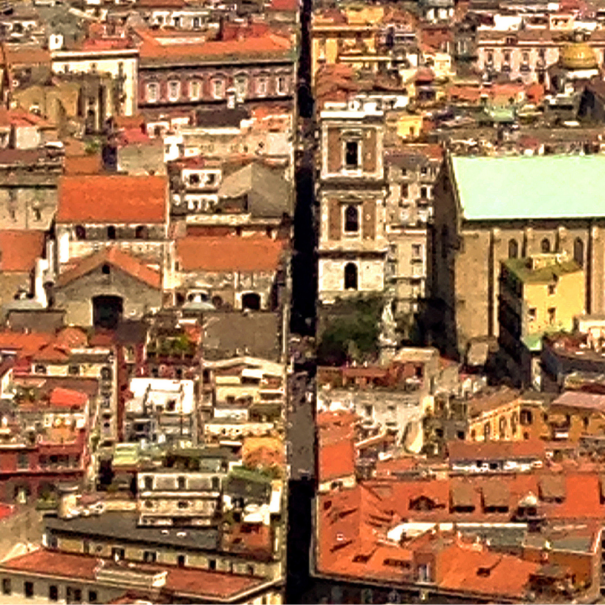
Catacombs of San Gennaro
Beneath the city lies an impressive labyrinth from centuries past. The catacombs of Naples’ patron saint, San Gennaro, are a fascinating mix of history, religion, and mystery. Frescoes from the 2nd century and underground burial chambers make this site a spine-tingling experience for history lovers.
Fun Fact: Saint Gennaro is so beloved in Naples that his “blood miracle” is said to occur three times a year — his dried blood is believed to liquefy. When it doesn’t, Neapolitans get worried!
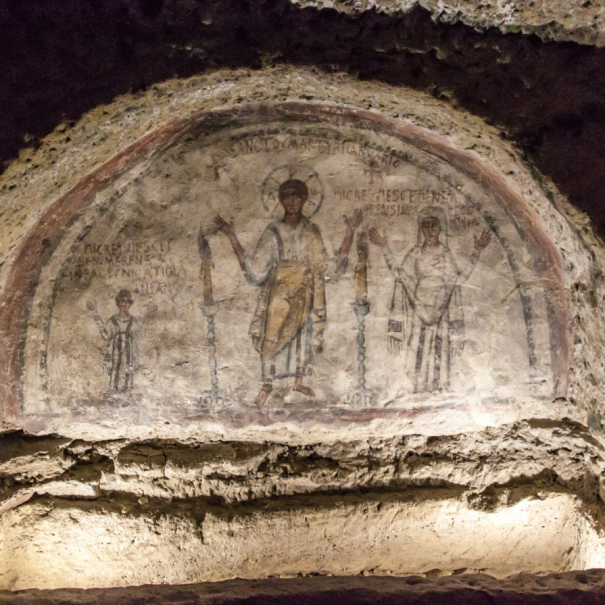
Castel Nuovo (Maschio Angioino)
With its mighty towers and grand triumphal arch, Castel Nuovo recalls the power and splendor of bygone eras. Built in the 13th century by Charles I of Anjou, it later became the residence of Aragonese and Spanish kings. The castle is particularly famous for the magnificent marble arch at the main entrance, commemorating Alfonso of Aragon’s triumphant entry. Inside, you’ll find impressive halls, a Gothic chapel, and the City Museum with artworks spanning several centuries. Today, it’s a beloved gathering place for both visitors and locals. Its imposing silhouette tells stories of power, culture, and spirit.
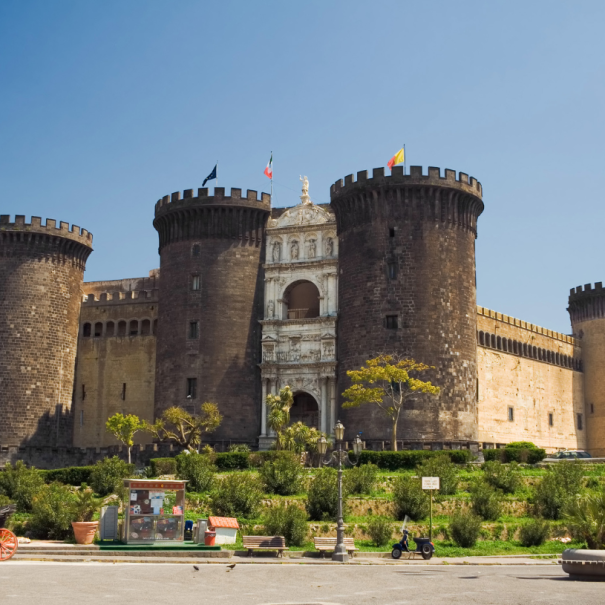
Teatro di San Carlo
The Teatro di San Carlo is Europe’s oldest still-operating opera house and is considered one of the most beautiful in the world. Since its opening in 1737, it has enchanted visitors with its magnificent décor and superb acoustics. Golden ornaments, red velvet curtains, and elaborate ceiling paintings create an atmosphere of pure elegance. Masters such as Rossini, Donizetti, and Verdi conducted here. Even today, performing on this stage is seen as a badge of honor for any opera singer. Guided tours offer fascinating glimpses behind the scenes — from royal boxes to the grand stage.
Best Scenic Viewpoints
Castel Sant’Elmo
High above Naples stands the star-shaped fortress of Castel Sant’Elmo, a masterpiece of medieval military architecture. Built in the 14th century, it once served as a strategic defense post overlooking the city. Today, it houses a museum of contemporary art and offers a breathtaking panoramic view of Naples, Vesuvius, and the bay. Especially at sunset, the city glows in golden hues — an unforgettable sight. Visitors can enjoy a perfect combination of culture, serenity, and sweeping views.
Posillipo Hill
This elegant district offers some of the most spectacular panoramas over the Bay of Naples and the islands of Capri and Ischia. Amid Mediterranean villas and lush gardens, you’ll experience the city’s tranquil side. The Parco Virgiliano, with its terraced paths, is a highlight — perfect for watching the sunset in peace. The area has long inspired poets and artists who found their muse here. Along Via Posillipo, elegant villas and cozy cafés line the way, offering fantastic views. It’s the ideal escape from the city’s hustle and bustle — a place to let your soul unwind.
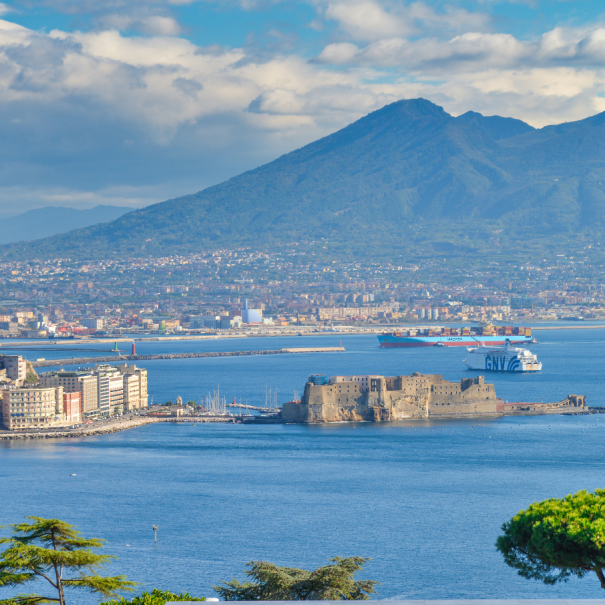
Culinary Highlights For Food Lovers
L’Antica Pizzeria da Michele
A trip to Naples without pizza? Unthinkable! The legendary Pizzeria da Michele is an institution, famous far beyond the city. Since 1870, only two types have been served — Margherita and Marinara — yet both are pure perfection. The dough is paper-thin, the tomatoes flavorful, and the mozzarella creamy — nothing more is needed for true pizza. The atmosphere is simple, lively, and authentically Neapolitan. Expect a long queue, but the wait is worth it. Julia Roberts made the place world-famous in the film Eat Pray Love.

Trattoria Nennella
Located in the heart of the Spanish Quarter (Quartieri Spagnoli), this trattoria is a feast for the senses. Forget fine manners — here, it’s all about pure joy of life. The waiters sing, dance, and serve with humor — often with a wink. Classic Neapolitan dishes like pasta e patate, meatballs, and fried vegetables fill the menu. Portions are generous, prices fair, and the atmosphere unforgettable.
Gran Caffè Gambrinus
This historic café on Piazza del Plebiscito was a gathering place for intellectuals and artists in the 19th century. Its interior dazzles with marble, gold accents, and historic paintings. An espresso here isn’t just coffee — it’s a ritual. Many claim it’s the best in all Naples. From the terrace, you have a lovely view over the square. Sitting here feels like stepping back in time.

Discover 70+ cities worldwide with professional audio guides – and counting! Thanks to integrated navigation, you’ll easily find your way, even without an internet connection. Whether it’s famous highlights or hidden gems – Plazes brings exciting tours and vivid stories straight to your smartphone. Completely free and no registration required. Download now and get started!
Insider Tips & Hidden Gems
Via San Gregorio Armeno
Via San Gregorio Armeno is the creative heart of Neapolitan craftsmanship. All year round, artisans craft intricate nativity figures that are famous worldwide. Alongside Mary and Joseph, you’ll also find modern figures — from football stars to politicians. During Christmas, the street turns into a bustling paradise, but even outside the season, it’s worth visiting to watch the artisans at work. The scent of wood, paint, and espresso fills the air. Every shop tells its own story of Naples’ love for detail.
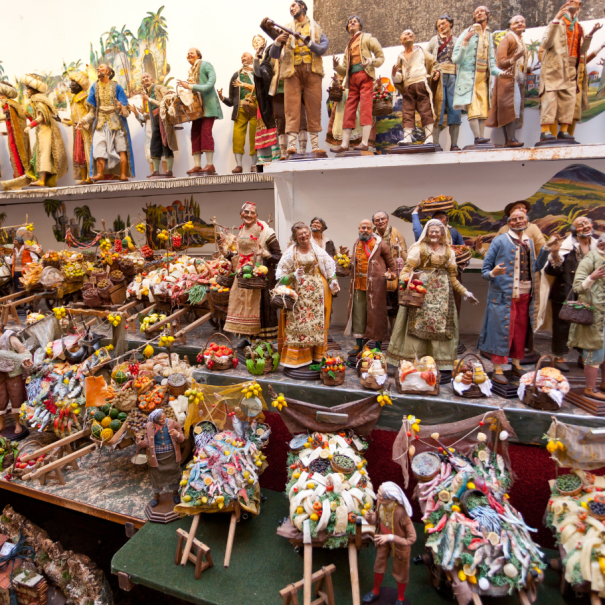
Complesso Monumentale di Santa Chiara
The Santa Chiara Monastery is an oasis of calm in the heart of Naples. Its colorful cloister, decorated with majolica tiles, is one of the city’s most beautiful spots. Amid lemon trees and artistic ceramics, you can find deep tranquility. The adjoining basilica impresses with Gothic frescoes and royal tombs. The play of light through the windows creates a peaceful atmosphere. It’s a place that invites you to pause and leave the city’s chaos behind — a true gem for culture lovers and romantics alike.
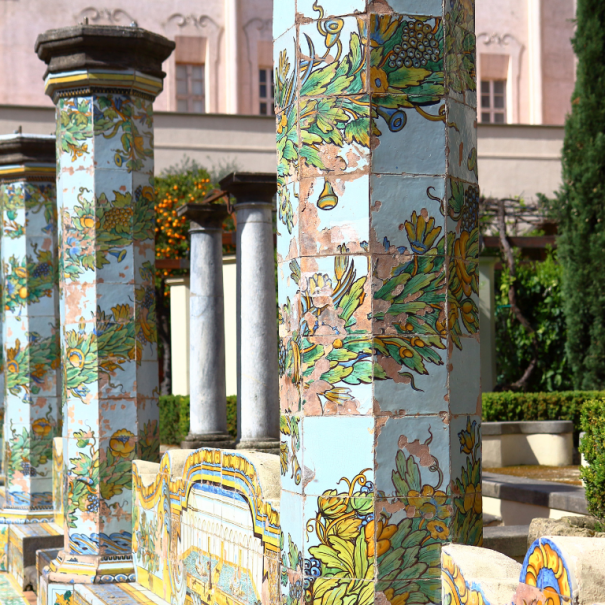
Museums for Culture and History Enthusiasts
National Archaeological Museum of Naples (Museo Archeologico Nazionale di Napoli)
One of the world’s most important museums for ancient art, it houses treasures from Pompeii, Herculaneum, and classical antiquity — mosaics, sculptures, and frescoes that bring history to life. The Farnese Collection, with monumental statues such as the Farnese Bull, is particularly famous.
Museo di Capodimonte
Set in an elegant palace once owned by the Bourbon kings, the Museo di Capodimonte holds one of Italy’s largest art collections. Works by Raphael, Titian, Caravaggio, and Botticelli adorn its grand halls. The surrounding park invites visitors to stroll and enjoy panoramic views after their museum visit. Here, royal elegance meets natural beauty — a perfect harmony of art, history, and landscape. Capodimonte is a must-see for every Naples visitor.
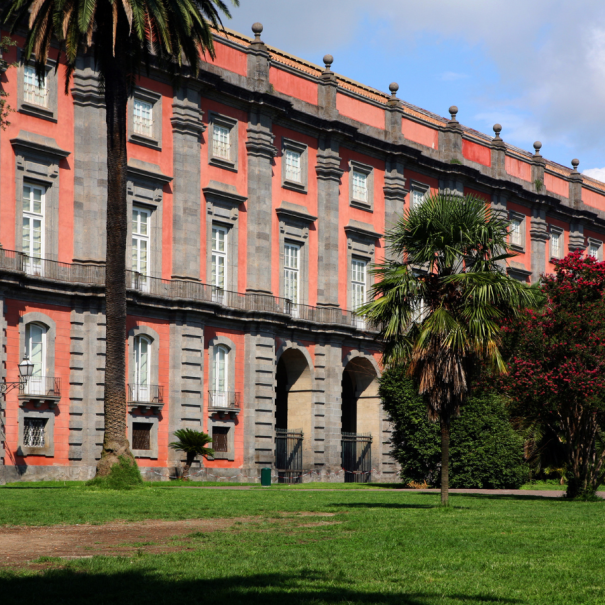
Shopping & Souvenirs
In Naples, shopping is more than consumption — it’s culture. Via Toledo attracts shoppers with international brands, while Via Chiaia exudes luxury and elegance. In the narrow lanes of the old town, you’ll find handmade shoes, leather bags, and jewelry made from volcanic lava stone. Hand-painted ceramics from Vietri sul Mare and Sorrento’s famous limoncello are especially popular. Culinary souvenirs like Neapolitan coffee or sweet sfogliatelle also make perfect gifts. On city markets such as Piazza Mercato, real treasures await. Chaotic, colorful, and passionate — that’s shopping, Neapolitan-style.
Tips for Cruise Passengers
Cruise ships dock at the Stazione Marittima port, just a short walk from the city center. Shuttle buses also run directly to Piazza Municipio. Those visiting Pompeii should take the Circumvesuviana train from Napoli Porta Nolana. Car rentals are possible, but traffic isn’t for the faint-hearted — it’s better to rely on public transport or guided tours.
Tips for Solo Travelers
Naples is safer for solo travelers than its reputation suggests — as long as you use common sense. Pickpockets favor busy areas, so keep valuables close. The metro network is well-developed, and the artistically designed Toledo Station is worth a stop. Tourist information centers can be found at Piazza del Plebiscito and Stazione Centrale.
Conclusion
Naples is an adventure for all the senses — a city that’s noisy, joyful, and full of love. Between the gritty charm of its old town, the art treasures of its museums, and the majesty of Vesuvius, this destination gets under your skin. Whether you come for the pizza, stay for the history, or return for the views — Naples will never let you go.
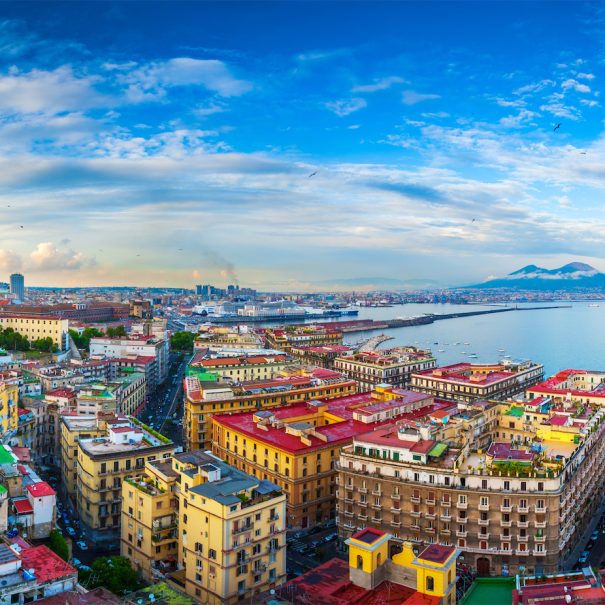
FAQs:
1. How can you save money without missing out on highlights?
Free of charge: Enjoy views from Belvedere San Martino or along the Lungomare. Eat cheaply away from the main streets (side alleys off Spaccanapoli or the Quartieri Spagnoli during the day). Churches are often free to enter; for museums, check for free admission days or evening discounts. Drinking water is available at marked fountains (acqua potabile).
2. What dining habits and customs should you know (beyond pizza)?
Popular street foods include Pizza al portafoglio (folded pizza “to go”), Frittatina di pasta, and Cuoppo (fried snacks served in a paper cone). For dessert, try Sfogliatella (riccia = crispy, frolla = crumbly) or Babà. Espresso is often enjoyed al banco, standing at the counter. Tipping is not mandatory, but rounding up the bill is appreciated. The caffè sospeso (a “suspended” coffee prepaid for someone in need) is a beautiful Neapolitan tradition.
3. How does the ZTL (restricted traffic zone) work, and how do you get from the airport to the center?
The ZTL (restricted traffic zone) is monitored by cameras. Anyone entering without authorization risks fines. It’s best to avoid driving in the city center and park in garages on the outskirts instead. From the airport, the Alibus takes you directly to Stazione Centrale and Molo Beverello, or you can opt for a fixed-rate taxi.
4. Plan B for rain or crowds: what’s worth seeing instead?
Perfect for bad weather are the National Archaeological Museum, the Sansevero Chapel with the Veiled Christ (book your time slot in advance!), and the Catacombs of San Gennaro.
5. Capri, Ischia, or Procida — which island is best for a day trip?
Capri stands for breathtaking panoramas, chic boutiques, and the Blue Grotto. Ischia impresses with its thermal gardens and beaches – perfect for relaxation. Procida is small, colorful, and more peaceful. Departures usually take place from Molo Beverello or Calata Porta di Massa. Depending on the type of boat, the crossing takes roughly 40 to 90 minutes.

